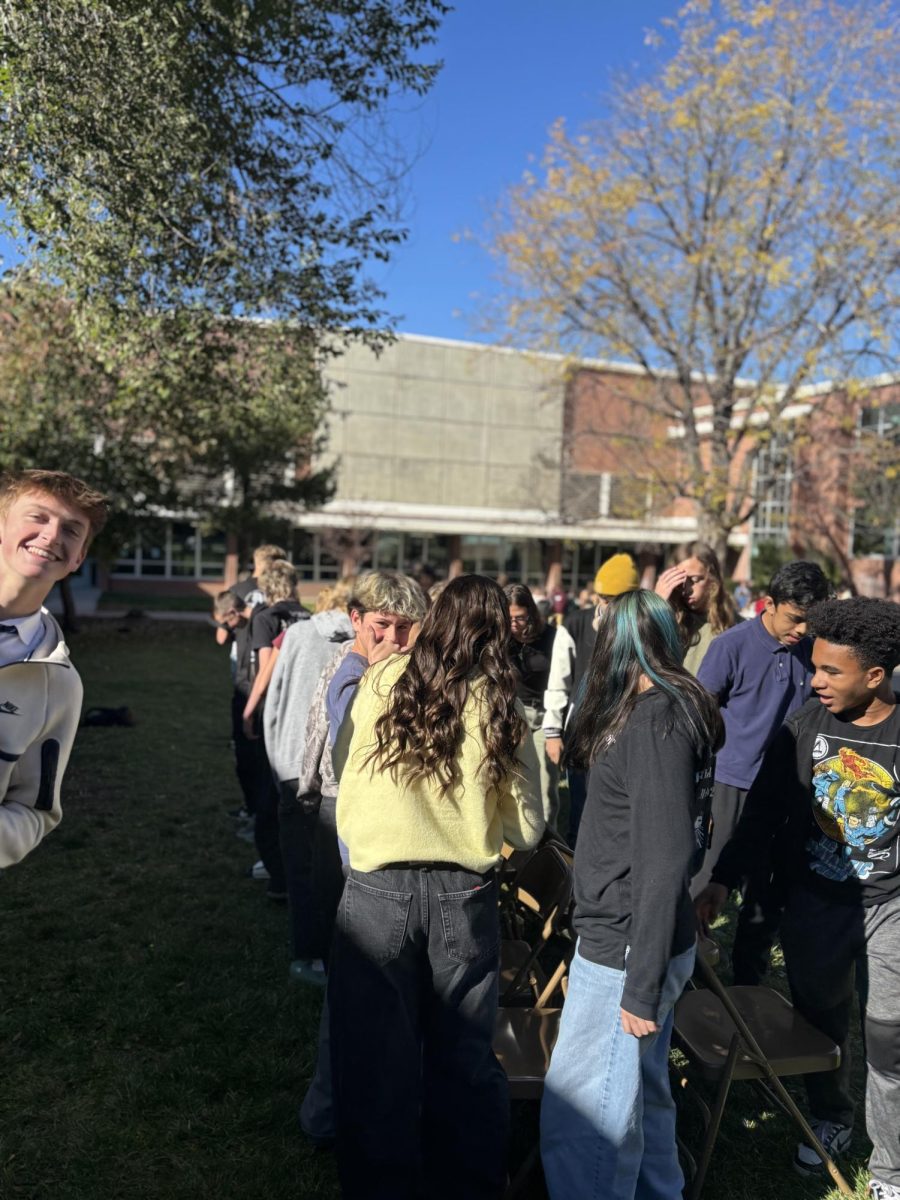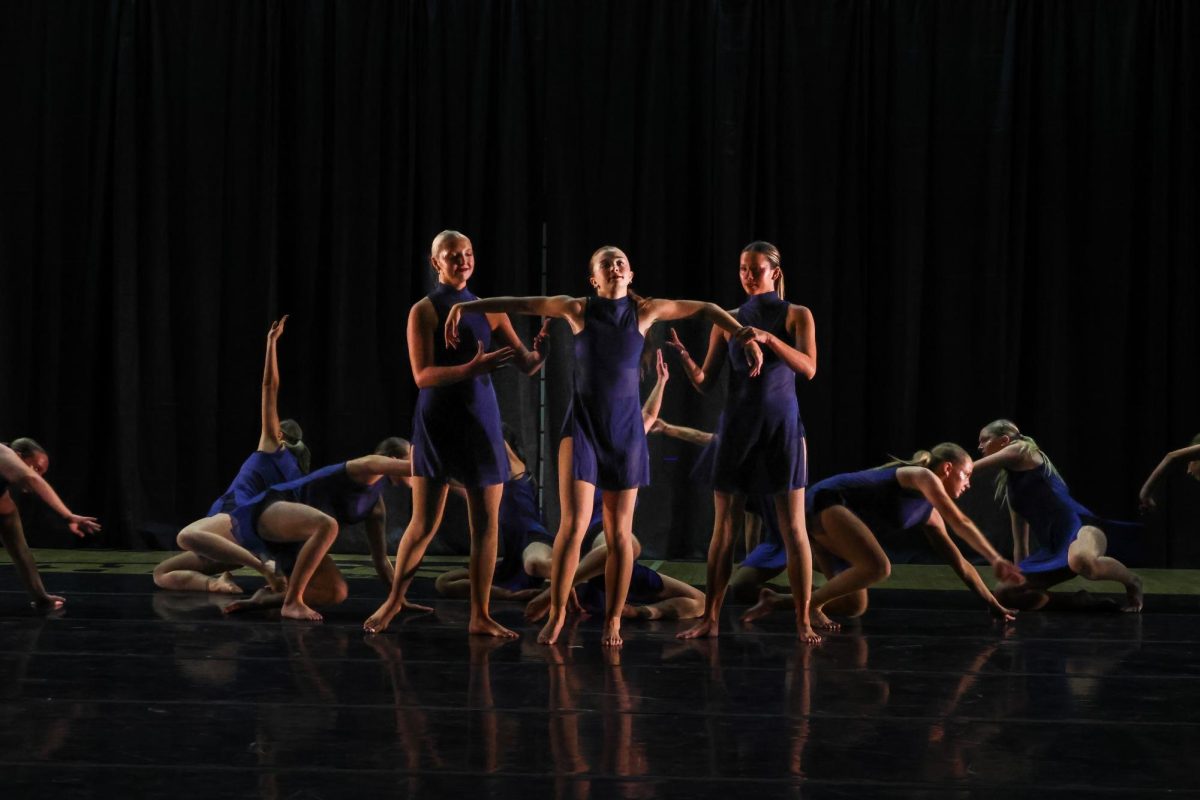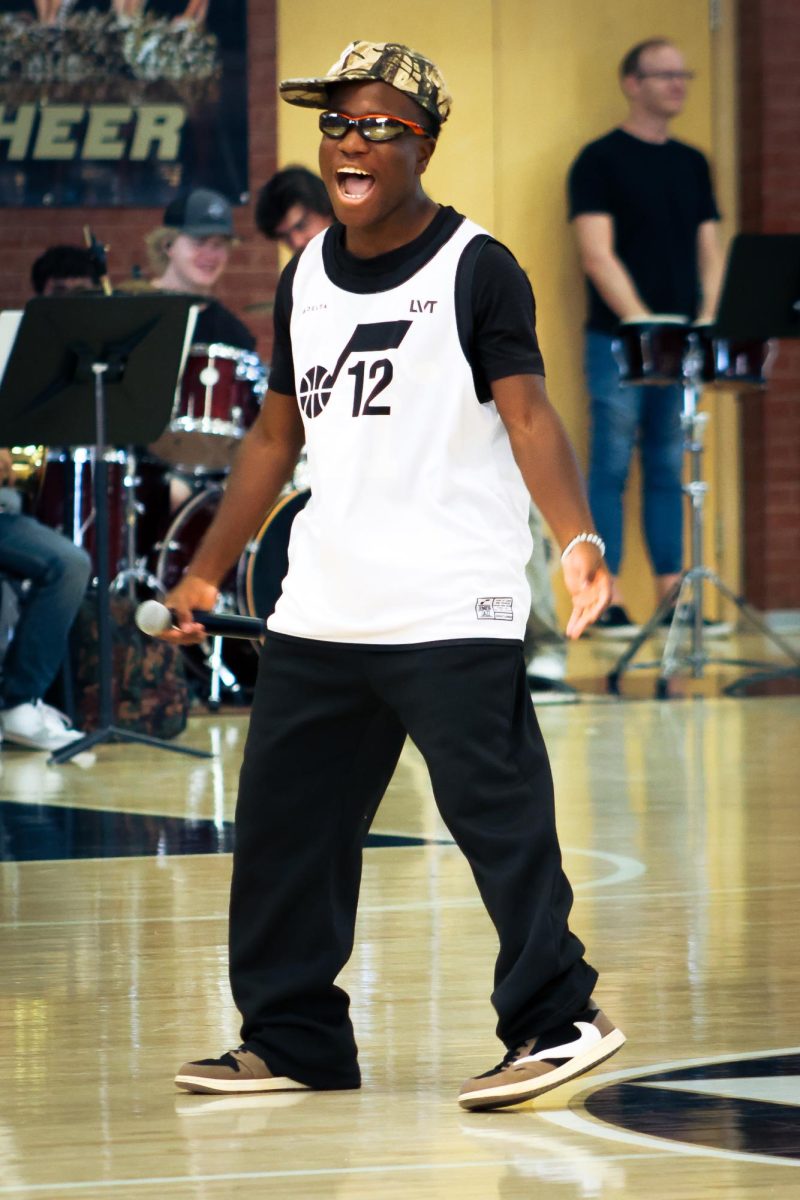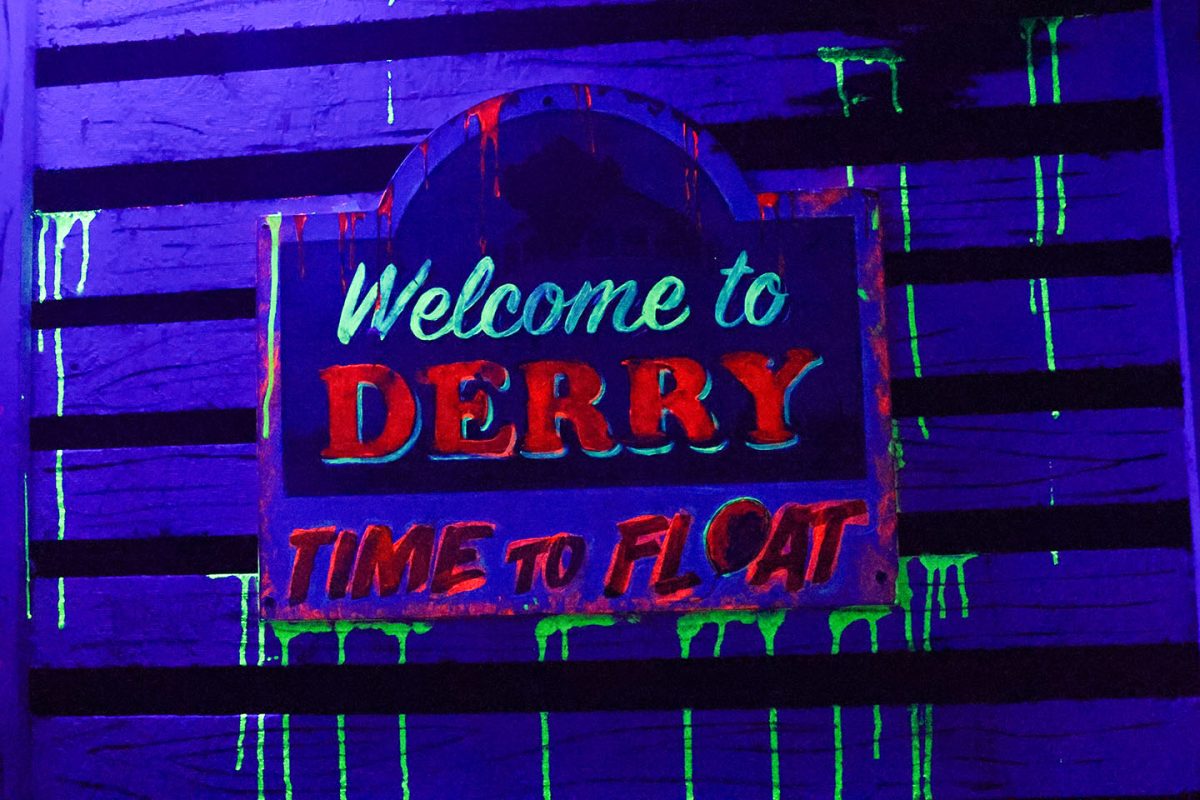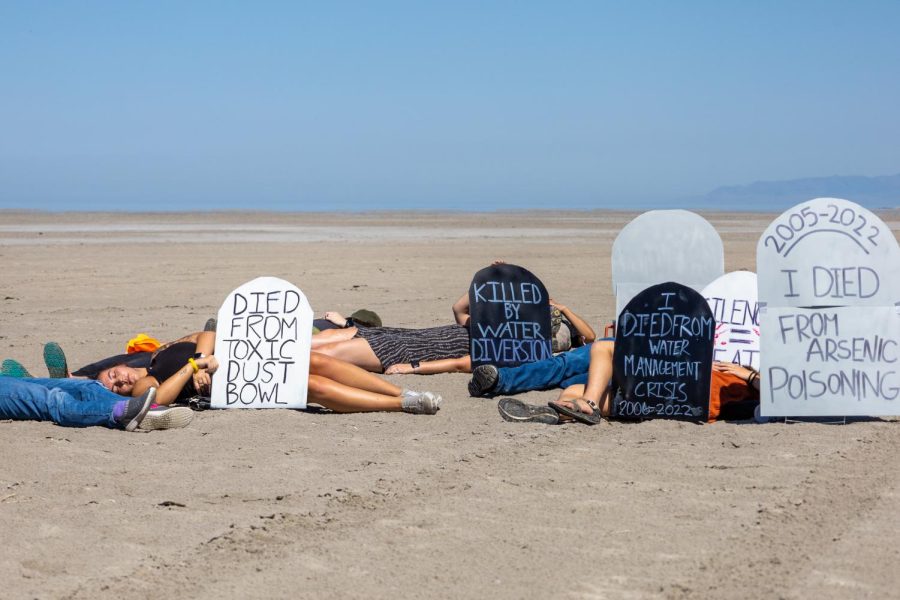Highland students lead a Die-In mourning the Great Salt Lake
A group of students laying down for the die-in at the Great Saltair.
September 29, 2022
On an afternoon in early September, a group of students laid down to rest in the dry lakebed of the Great Salt Lake, surrounded by headstones. They were protesting the shrinking of the Great Salt Lake with a die-in, a theatrical form of protest.
The die-in happened on September third at the Great Saltair, and it was headed by a group called Utah Youth Environmental Solutions (UYES). Their goal was to raise attention about the Great Salt Lake shrinking, as well as to get students involved in activism.
UYES used this protest as a way to give the group of students in their four-week program on climate justice and activism program experience, including Highland students Sheyda Allen and Myra Hicks, who emceed the event.
The pair are friends, and they learned about UYES through social media and ended up joining UYES together. Coming into their program, they were new to the activism scene, but they left with a solid foundation and some good experience under their belts.
Their program was built around protesting the laws that are shrinking and damaging the Great Salt Lake, including water diversion laws.
“The reason it’s drying up is mostly because of water diversion laws on tributaries,” Allen said, “And most of our water is being diverted for alfalfa farming, that’s creating a lot of issues bringing water into the Great Salt Lake. Because of that the soil beneath the Great Salt Lake is being exposed to the air which is letting out toxins that have been sitting there for hundreds of years. It’s only getting worse with the mines in the area that have smelters that lead into the Great Salt Lake.”
The massive area of lakebed that is being uncovered is affecting the air quality, as it’s releasing toxins such as arsenic into Utah’s air.
“There are also a lot of other natural toxins in the lake,” Hicks said, “Plus the mines are dumping waste water and metals into the lake, so there are just a lot of toxins floating around in there, being released into the air.”
Additionally, the shrinking of the lake may hurt the snow quality in Utah’s ski resorts.
According to Allen, “Skiing seasons will be shorter too, because with dirty air, the snow melts quicker. The Great Salt Lake dying is also going to end tourism and the natural landscape of Utah. Even if people don’t realize it, the Great Salt Lake is a touristy site.”
The Great Salt Lake has already shrunk substantially, and Hicks and Allen have identified some of the reasons why it is shrinking so quickly.
One issue they referenced was the diversion of water headed to the Great Salt Lake, as a lot of it gets taken up for farming, mainly to grow alfalfa.
An argument is that Utah should not be growing this much alfalfa if it doesn’t have the water and climate to support it. For this argument and others like it to make ground, there will need to be change in the Utah legislature, such as eliminating the Use it or Lose it statuses, which Allen and Hicks claim encourages people and companies to use water, even if it’s not necessary.
Revoking the Use it or Lose it statutes is one suggestion Allen and Hicks had. They also identified a couple of other changes that they’d like to see.
“I’d like to see more policies in place protecting our land.,” Allen said. “As of right now, Utah views land and water that isn’t being used for profit as wasted land, and our government doesn’t really value things just existing. I think that there need to be policies in place to protect land that we have right now because it’s worth more than just profit.”
“One idea is to give the lake itself rights, so you can’t just take all of the water from it,” said Hicks.
Although the legislative changes they have in mind may have potential, what they need first is support. There is a growing movement to protect the lake, but Allen and Hicks are trying to get even more people aware of the issue and engaging in protest.
That was one of their purposes in doing the die-in.
“We chose a die-in because it’s not a common protest in Utah, and we knew that organizing a die-in would bring more emotional value to the protests while also doing something unique,” Allen said. “It was also good at getting media attention, because that’s really what we wanted to do was to bring more attention to the issue.”
“We almost wanted to turn the protest into clickbait,” Hicks said. “Creating intrigue and emotional appeal, the die-in had really cool visuals which was one of our goals.”
They weren’t just looking for attention from the media either, as they also want to get more students involved in protests and advocating for their beliefs.
“I think it’s really important for students to know that they have a role,” Allen said. “And I’ve seen a lot of this, unfortunately, at Highland, is students feeling a sort of hopelessness when it comes to activism and their role in the community. While obviously individuals aren’t always going to make much of an impact, there is still a lot that you can do. And individual efforts do more than just turning a blind eye.”
“We’ve seen with the walkouts last year,” Hicks said, “There are a lot of students that do care about politics and activism, they just need opportunities to do so. But with UYES we proved that five teenagers can organize a protest that gathered a hundred people at the Great Salt Lake.”
With such a small group gathering relatively large support, along with getting media attention from multiple sources, it’s clear that students are able to make waves about issues their passionate about, it just takes a little work.
